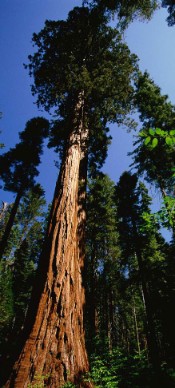Seed Banks
Plant Seed Banks
Plant seed banks store genetic material of plants in the form of seeds.
Seed banking is a great way to conserve plants because their small size provides a very convenient and cheap way to store plant genetic material. They take up little space and they also can remain viable as long as their surroundings are kept at a low temperature. Many botanic gardens contain seed banks to help preserve endangered species. Some botanic gardens even store cryopreserved embryos, minute seeds, and tissues of plants. (39)
 Seeds in a temperature-controlled cabinet at Kew botanic gardens. | Part of the Millennium Seed Bank Partnership, the Kew Royal Botanic Gardens conserves 27,000 species in its seed bank, which equals 1.6 billion seeds total. This collection consists of 10% of all plant species on Earth. Many of these preserved plants are threatened with extinction due to human disturbance. Humidity damages seed viability so seeds are stored in dry conditions. In the field, after the seeds are collected from target species, they are kept in a well-ventilated dry area to prevent mold growth. Seed banks provide a great safeguard for threatened species, for they can be used in habitat restoration programs in the future. (40) |
Redwood Clones An organization called Archangel Ancient Tree Archive is currently collecting the genetic material from California's towering redwood and sequoia trees, along with 60 other ancient tree species around the world. Some of these trees have been alive for over 3,000 years, and now they are at great risk of extinction. The organization plans to collect the samples of the trees and clone them to plant millions of copies on college campuses, forests, and even residential backyards. This could help replenish the world's diminished population of giant trees and thus increase the absorption of carbon dioxide and releasing of oxygen, as well as restoring the biodiversity of old growth forests. According to Bill Libby, a retired tree geneticist and consultant to Archangel Archive, "the longer a tree lives, the longer its carbon remains bottled up instead of reaching the atmosphere." This makes the long-living redwoods and sequoias great candidates for gene banking. (41) |
|
Coral Bank
Corals are not plants, but are in the anthozoans class within the phylum, Cnidaria. They are related to sea anemones and consist of a simple polyp which produces a protective skeleton from its base, developing into the structure we call coral. Hermatypic corals form colonies and become coral reefs, but are very vulnerable to climate change and human disturbance. They reproduce asexually or sexually, often in spawning events in which they synchronously release their gametes into the water and external fertilization takes place. (42)
 | Coral reefs form the basis of many underwater ecosystems. Without them, biodiversity would diminish. |
The Smithsonian Zoological Park and the Hawaii Institute of Marine Biology has created the world's first frozen bank for coral species native to Hawaii. Because of their natural carbon dioxide absorption and their unique ability to serve as underwater ecosystems, they are very valuable to biodiversity. However, recent human activities have endangered many coral reefs, threatening their survival. The bank in Kaneohe Bay, Oahu could be the last hope for some species.
The Cryopreservation bank stores sperm and embryo samples from mushroom coral (Fungia scutaria) and rice coral (Montipora capitata), hoping to be able to use them in the future by introducing them back into the wild to encourage a more diverse and healthy gene pool. (43)
Back to Ex-Situ Conservation | What is Captive Breeding? |

